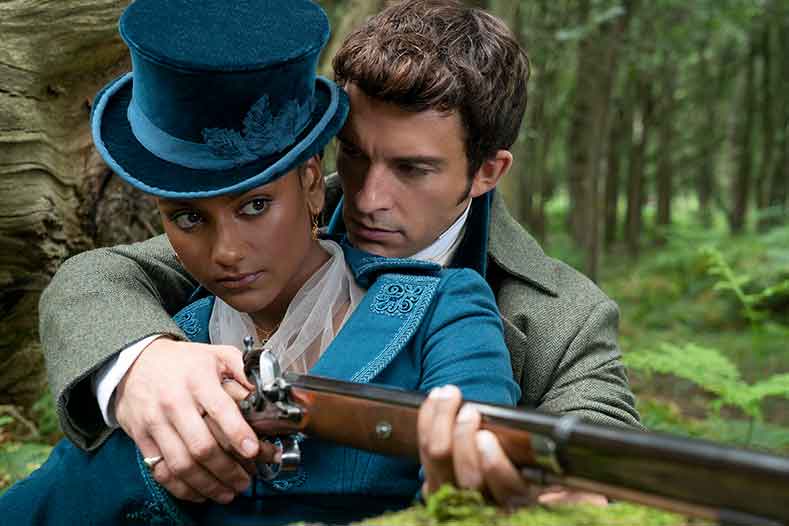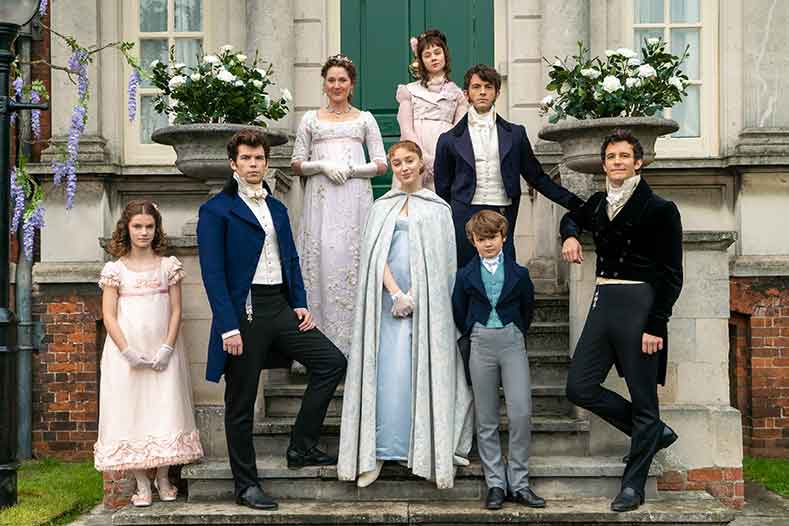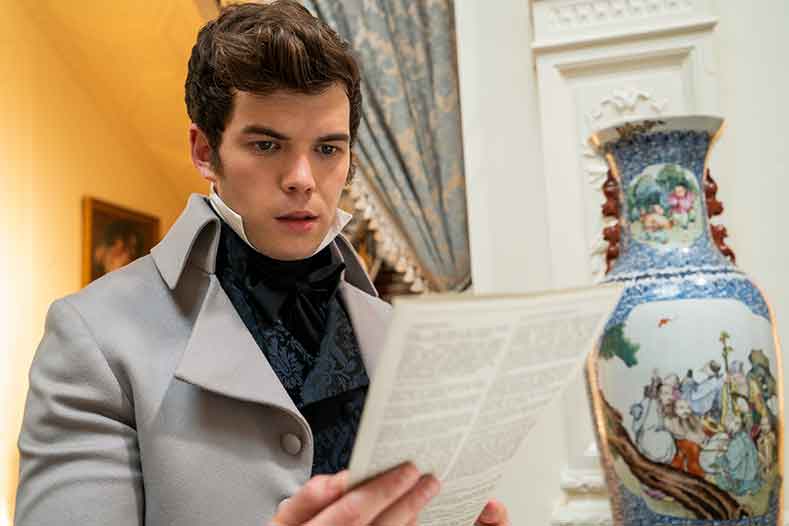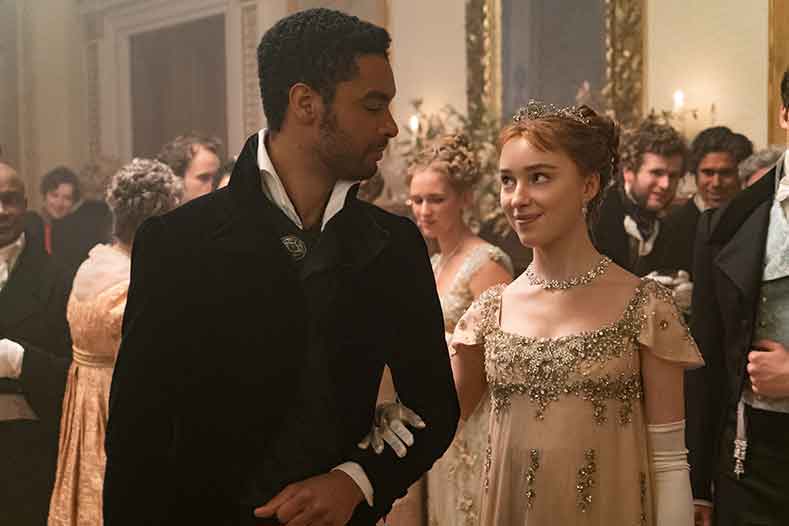Who says writing can't just be reading 8 books in a row?

Author Julia Quinn kicked off her Bridgertonbooks back in 2000, when the first novel in the bestselling series, The Duke & I, was published. Over the next eight books, she would transport readers to England in the 1800s as she spun out the story of the Bridgertons, the titular family from which the series gets its name — and upon whom the hit Netflix television show is centred.
The overarching premise of the Bridgerton books is fairly simple: The late Viscount Bridgerton and his wife Lady Violet had eight children (Anthony, Benedict, Colin, Daphne, Freddy, Eloise, Francesca, Gregory, and Hyacinth), all of whom find eventually find love in their own ways, with each story unfolding one by one, as each of the siblings becomes the focus of their own book in the series. (Sadly, Quinn has decided notto devote a book to Lady Violet and her husband herself, despite their having what might be the sweetest love story of all the Bridgerton family members, with an albeit tragic ending.)
But while the Netflix series brings Quinn’s fictional take on Regency England to life in stunning high definition, there’s plenty awaiting fans within her books. Not only do you get a little more insight into each character’s mind — books have fewer limits as a medium compared to TV — but there’s plenty to learn as a writer seeking to improve your craft, or perhaps even working towards getting published.
Here are a few of the lessons you can pick up by reading your way through the Bridgerton books:

Develop all your characters. Not just the main ones.
One of the hallmarks of romance as a genre is that writers of series are often able to expand and build on the worlds they’ve created by simply shifting their focuses to a side character from a previous story and promoting them to the protagonist. However, in order to transition them successfully, writers must not only effectively introduce these secondary characters in the background, but they also need to be interesting and dynamic enough to exist on their own, or things must fall apart when they finally step into the spotlight.
Quinn nails this in Bridgerton as the entire family is quite close with each other, so the various siblings and their partners are always turning up in each other’s novels, thus laying the groundwork for future books. This means that when it’s finally time for Anthony or even Colin or Eloise to get their books, audiences are more than familiar with them because they’d already met them as part of Daphne’s story. It also builds anticipation among readers as they eagerly await stories featuring these siblings.
But what if you’re not trying to write a whole book series, but simply focusing on a standalone novel? Well, well-rounded characters can only serve to make your world feel more lived in, and like your characters have real, tangible relationships with each other. This, in turn, leads to organic story developments that feel perfectly in character, which only make your storytelling more effective!

Get creative with your exposition.
The Bridgertons aren’t the only recurring characters in the series. There’s also the mysterious and elusive Lady Whistledown, who writes a regularly published gossip sheet in which she not only reveals the secrets (or truth) about various members of English high society, but she also actually names them in the process, as opposed to alluding who they might be, like other gossip papers at the time.
Quinn herself has noted that the idea for the character and its actual execution allowed her to introduce readers to a bunch of key facts about the Bridgerton world, while also setting up certain characters and their dynamics with each other. This is particularly crucial when it comes to writing books that could be read on their own or as part of a series, as the Bridgerton books are, thus freeing up Quinn to dive right into the story she wants to tell.
But that’s not all Lady Whistledown has to offer! Her comments sometimes have the added benefit of spurring the plot on, as characters sometimes react to what she says, ensuring Quinn’s storytelling never loses momentum.

Treat love stories like romance novels do.
Treat love stories like romance novels do.
Romance novels continue to be one of the biggest money makers in the publishing industry, and with good reason: people like reading about characters falling in love. But just because two characters might fall in love in your writing, it doesn’t mean that their relationship — or that particular storyline — is actually written romantically.
And that’s because writing a good romance is an actual skill! Romance writers like Quinn must be creative in how they keep both halves of their main couples apart and how they build tension between them and bring them back together — all while helping them achieve their goals and grow as characters. Quinn does this across all eight Bridgerton books. Even though each couple’s story and dynamic varies from book to book, she finds ways to have the characters connect, while also keeping them apart, only to slowly spin them back together in the end.
However, there is one slight caveat to this tip. While romance as a genre promises a happy ending for everyone involved — much like murder mysteries promise that the murder will be caught — you don’t necessarily have to do this in your own work. After all, as Lady Violet herself proves, not all love stories have happy endings, and some are even cut short. What is important to remember is to not treat the romance element of your work like it’s an afterthought. Not when it can make your readers care about your characters even more, and give them something to root for!

BONUS: Struggling with a character name? Why not use the alphabet!
BONUS: Struggling with a character name? Why not use the alphabet!
It can be hard keeping track of all your characters names, and with there being eight Bridgerton siblings, that’s no easy task — especially when it comes to remembering the order in which they’re born. Luckily, Quinn made it easy for readers and for herself by simply naming each of them alphabetically. So even though certain siblings stories might be published out of order (such as Daphne’s coming first), readers are always aware of which Bridgerton might be older or younger than the other, which leads to a lot less confusion.
